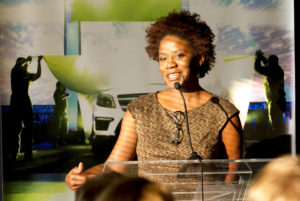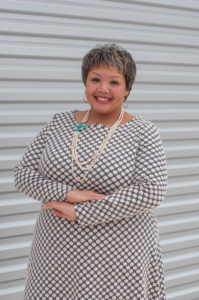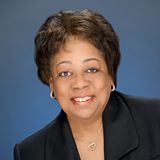Diversifying the Corporate and Nonprofit Sectors
Published on September 23, 2016, at 12:58 p.m.
By Kennedy Studdard.
Felyicia Jerald came from a background of tropical Florida weather and strong, community-oriented women. With a degree in newspaper journalism from Florida A&M, her first job right out of college was an internship at The Birmingham News. But Jerald has always had a love for writing, and through a series of events and jobs, she has found her way into the public relations field.“I had to grow into [public relations],” said Jerald. “The newspaper industry was changing, and like the world, I had to adapt to that change. But I like change and diversity, and eventually that led me here.”
“Here” is the corporate sector of public relations, and Jerald has been the communication manager of Mercedes-Benz U.S. International (MBUSI) for more than 15 years. During that time, she has seen the world evolve from newsprint to social media and a wide variety of categories for diversity emerge.
As an African-American woman in the PR field, Jerald understands how crucial diversity in the workplace is for any organization.
“People tell me that they’re proud to see me in this communication manager role, but I’m more proud to be a strong representation of my disposition and background,” said Jerald. “In a field like this, it’s better to bring different players to the table, because there’s always a chance to remind people to accurately reflect their company’s demographics or global market.”

Because Mercedes-Benz operates in an international market, its target audiences consist of a wide range of ethnic backgrounds. Frequently Jerald interacts face to face with colleagues from Germany via teleconferences and creates content that reaches all walks of life. But most days, she works in an open office environment with no cubicles. In such a setting, Jerald is able to quickly interact with fellow colleagues because of the lack of desk barriers.
MBUSI is creating an inclusive work space that is optimal for effective communication and group collaboration, and recently the company re-established a diversity committee to take a fresh look at the work environment.
Mercedes-Benz renewing its focus on becoming an inclusive workplace
Mercedes-Benz is making a conscious effort to be more inclusive when hiring, and across the board the company has done a phenomenal job at targeting diversity. But Jerald believes there’s always an opportunity to improve, and that’s where the diversity committee comes in. For example, in the past the company mainly focused on gender and minorities, but now it has to also look at the generational gaps and how to make more people aware of the digital/tech-savvy era.
“Regarding the future of PR, we’ve got to look more closely at social media, and maybe eventually virtual PR,” chuckled Jerald. “But right now, Mercedes-Benz is providing numerous outlets and opportunities for diversity and to expand our understanding of the world as we know it today.”
The future calls for recognition of the past
The public relations market is evolving. It is becoming a powerhouse for women who are excellent storytellers and writers. But even in this female-dominated industry, women are still not consistently sitting at the executive table or occupying upper-level leadership roles. And even still, so few in those roles are minorities. But when they are, there are challenges and obstacles to overcome.
Jerald remembered a difficult time in her career where she felt as though she was being treated unfairly because of her race. But in such situations, her best advice in order to persevere is to buckle down and forge ahead.
In order to overcome a troubling experience, Jerald advises anyone that “you’ve got to realize that you’re here to do a job, and don’t let the unknown factors at play impact your situation.”
But diversity doesn’t just mean race or religion anymore. It could mean sexual orientation, gender, age, disability, ethnicity, socioeconomic status and so much more.
But why should organizations diversify? Why does being inclusive and understanding someone not like you matter? Natasha Rogers, director of the Negro Southern League Museum and a pupil of Jerald, explained why diversity in the nonprofit sector matters.
“At the end of the day, you’re working toward some kind of common goal for the good of the community. So it’s important to understand your audience because you’re trying to change one’s behavior or action, and you can’t do that without knowing how to be inclusive and considerate of that target group,” said Rogers.

Diversity through the eyes of the nonprofit sector
In her director position, Rogers has seen the benefits of looking at other viewpoints and addressing situations through an open mind.
“In PR, you have to wear multiple hats and know multiple skills because nonprofits don’t always have a large staff and unlimited resources. But you also need to stay current and be open to change if you want to positively impact the community,” said Rogers. “Remember that the similarities between people trump the differences, and you never know who you’ll meet or who will come across your message.”
With a similar outlook, companies across all sectors of public relations are making an effort to cater to this diverse world through an inclusive workplace. According to Samuetta Nesbitt, longtime friend and previous colleague of Jerald, “Diversity can give you more than one answer to a problem based on different experiences and failures,” and an inclusive workplace can lead to a wealth of knowledge when making key decisions.
Nesbitt, senior vice president of public, media and community relations for United Way of Central Alabama, has seen the results of her work in the nonprofit market flourish “in a series of happy endings for [the practitioner] and everybody on the team.” Additionally, she recognizes success occurs more frequently when there’s a group of like-minded people who are unique and willing to share their differences. But a diverse team or workplace doesn’t mean that an organization should focus on just a few diversity sectors.
“It doesn’t end with one course,” said Nesbitt. “Diversity is a never-ending process that people should want to continue addressing in order to keep their understanding fresh and polished.”

Differences that keep us moving forward
With the world rapidly changing to define and address all of the different facets of diversity, the public relations industry is looking deeper into different backgrounds and stories to better improve the art of crafting the message. Diversity can be a range of different things — people, views, ideas, goals — but it also can be the missing factor to a more understanding and open-minded world. Day by day people everywhere are recognizing the need for change, and slowly but surely messages are continuing to be created for all audiences.
Advice from all three sources about the corporate and nonprofit sectors of the PR industry:
• Networking is key.
• Stay on your game; be updated and get informed, even if you have to dig deep.
• Don’t settle — learn new things and shoot for the moon.
• Seek to learn everything you can and read everything you can.
• Find a mentor or multiple mentors to help you through your journey.
• Learn the culture of the organization and gain that experience.
• Don’t allow yourself to be paralyzed with a fear that prevents you from doing anything and everything.
• Look for a need and fill it — volunteer, serve on different committees and boards, etc.
• Be patient as you learn the skills of your job, because working is a learning process.




